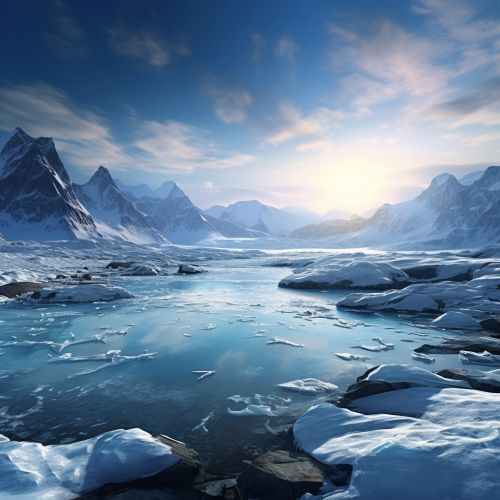Greenland
Geography
Greenland is the world's largest non-continental island, located between the Arctic and Atlantic Oceans, east of the Canadian Arctic Archipelago. It is an autonomous territory within the Kingdom of Danish Realm. The majority of its residents are Inuit, whose ancestors migrated from Alaska through Northern Canada, gradually settling across the island by the 13th century.


Geology
Greenland's geology is characterized by its vast tectonic history. The island's basement rock is the Precambrian shield, composed mostly of igneous rocks formed during the Archean eon, metamorphosed by multiple tectonic events. The shield is overlain by sedimentary rocks formed from the Proterozoic eon to the present.
Climate
Greenland has an Arctic climate with average temperatures that do not exceed 10 °C (50 °F) in the warmest summer months. The west coast has a milder coastal climate due to warm air originating from the Atlantic Ocean. The interior of Greenland experiences an ice cap climate, while the majority of the island is covered by the only contemporary ice sheet outside of Antarctica.
Biodiversity
Despite its harsh climate, Greenland hosts various species of wildlife. Marine mammals include the walrus, seals, and several species of whales. The land fauna consists predominantly of the polar bear, reindeer, and Arctic fox. The island's birdlife includes species such as the snow owl and several species of falcon, eagle, and hawk.
History
The history of Greenland is a story of life under extreme Arctic conditions. The first humans are thought to have arrived around 2500 BC. Norsemen settled the uninhabited southern part of Greenland beginning in the 10th century, and Inuit peoples arrived in the 13th century. The Norse colonies disappeared in the late 15th century when Norway was hit by the Black Death and entered a severe decline.
Economy
Greenland's economy is highly dependent on fishing and fish exports, with the shrimp and Greenland halibut being the most significant sources of income. The public sector, including publicly owned enterprises and the municipalities, plays a dominant role in Greenland's economy. The island has potential for natural resource exploitation with hydrocarbons and minerals, including rare-earth elements.
Culture
Greenlandic culture is a blend of traditional Inuit (Kalaallit) and Scandinavian culture. Greenland was isolated from modern cultural influences for centuries. The introduction of radio and television in the 20th century brought the outside world into Greenlandic homes. The Greenlandic language was made the sole official language in June 2009.
